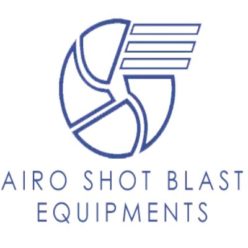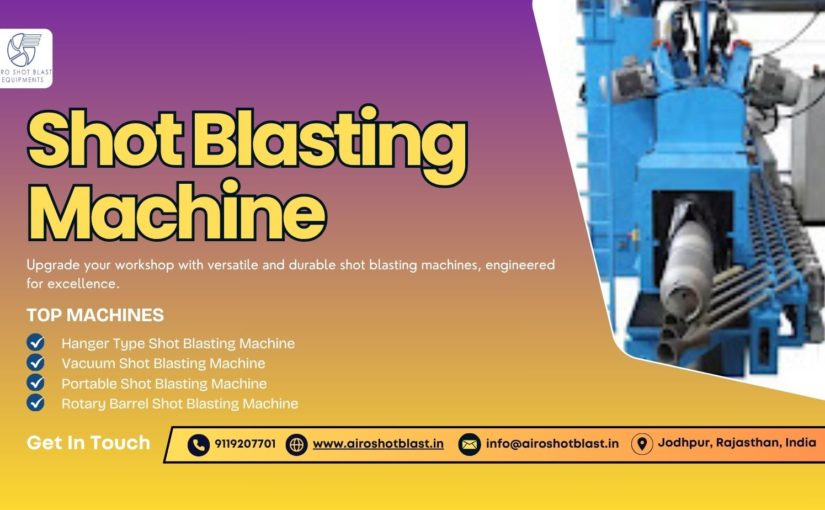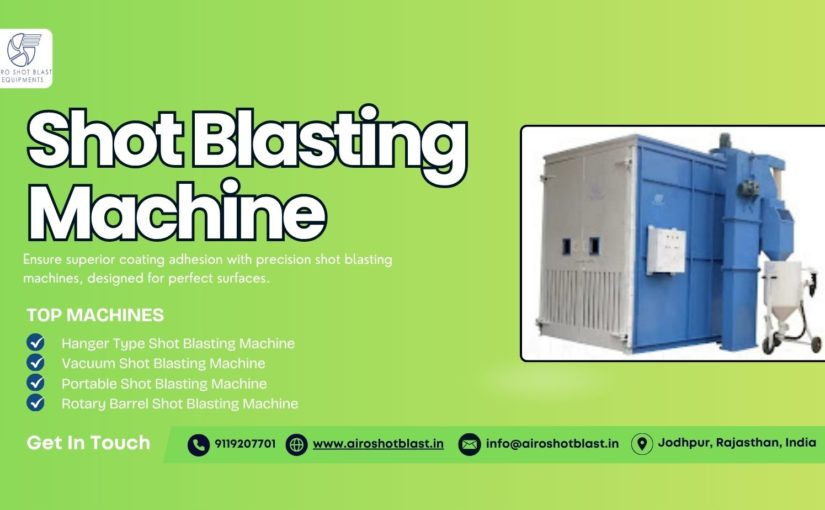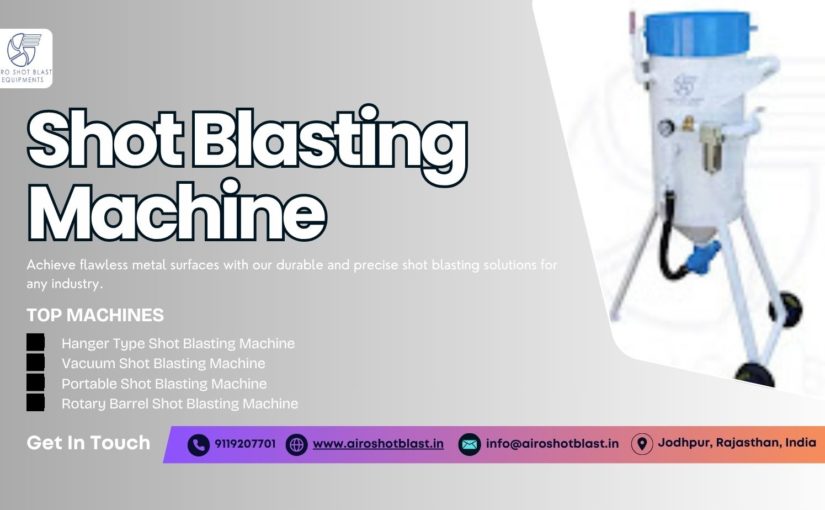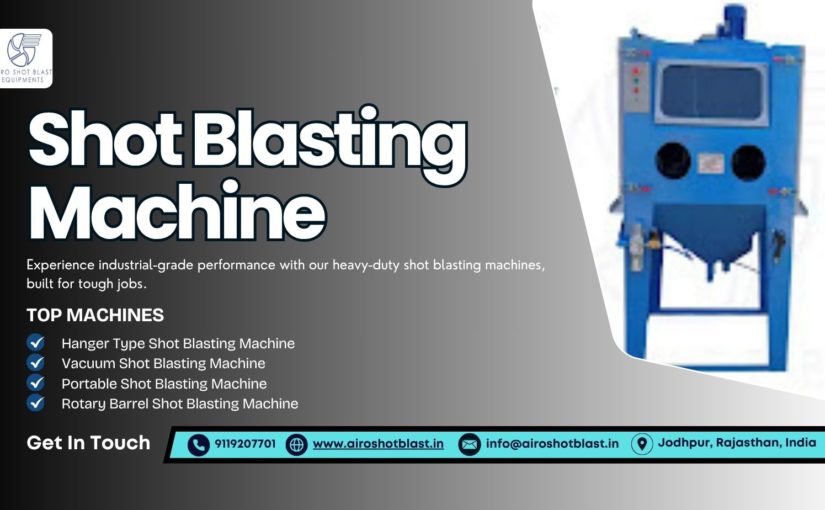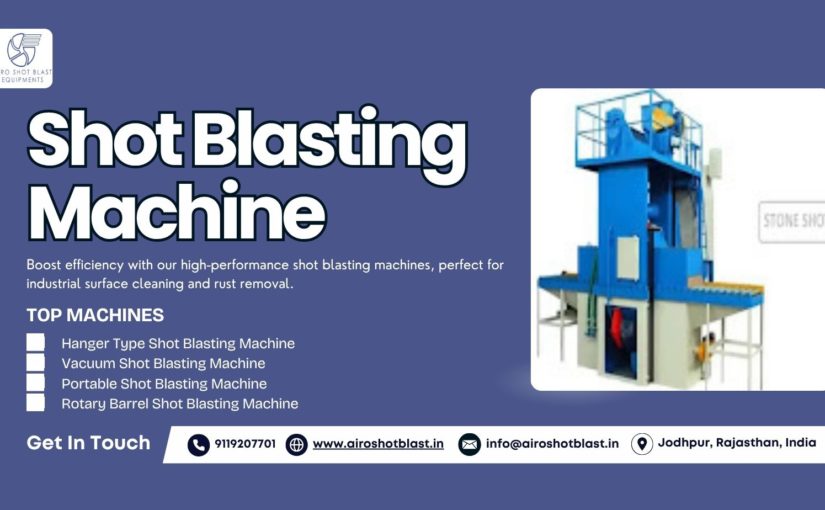Tired of waste disposal issues in your manufacturing process? Discover how an automatic shot blasting machine reduces environmental impact while boosting efficiency, saving costs, and streamlining your operations.
Introduction
Ever felt like industrial waste management is giving you a major headache? You’re not alone. In today’s fast-paced industrial world, waste disposal isn’t just a challenge—it’s a costly, time-consuming, and environmentally critical issue. From leftover abrasive materials to airborne dust particles, traditional shot blasting methods often come with a not-so-pretty environmental price tag.
But here’s the good news: Waste Disposal Headaches? Automatic Shot Blasting Machine Reduces Environmental Impact—and in more ways than one! It’s not just about cutting waste; it’s about smarter, cleaner, and more responsible surface treatment processes.
Let’s peel back the curtain and explore how automatic shot blasting machines are transforming industries, easing waste management woes, and championing a greener planet—all while cranking up your productivity.
Understanding the Waste Problem in Traditional Shot Blasting
Before diving into the solution, let’s take a moment to understand what’s really going wrong with conventional setups.
Where Does the Waste Come From?
In traditional shot blasting, especially with older manual systems, the process isn’t exactly eco-friendly. Here’s why:
- Excess abrasive material: A large portion of media (steel shots, grits, or sand) gets wasted due to inefficient collection systems.
- Dust emissions: Fine particles released during blasting can escape into the air, harming workers and the environment.
- No media recycling: Many setups don’t reuse abrasive media, which increases consumption and waste.
- Energy inefficiency: Manual blasting consumes more power per unit of surface treated.
Now add the regulatory compliance burden, the mounting disposal costs, and the risk of environmental fines—it’s easy to see why waste disposal is giving manufacturers a migraine!
Enter the Game-Changer: Automatic Shot Blasting Machine
So, what’s the cure for this industrial-sized headache? The automatic shot blasting machine. More than just a fancy piece of equipment, it’s a sustainable solution purpose-built for reducing environmental impact.
Let’s break it down.
How It Works
An automatic shot blasting machine automates the surface preparation process by:
- Loading components into a closed blast chamber.
- Propelling abrasive media with turbines or nozzles at high speeds.
- Capturing and recycling used media automatically.
- Filtering air and collecting dust through built-in dust collectors.
All of this happens with minimal human intervention, reducing errors, improving uniformity, and most importantly—cutting down on waste.
Automatic Shot Blasting Machine Reduces Environmental Impact—Here’s How
1. Efficient Media Recycling
Gone are the days of single-use abrasive materials. Modern machines feature multi-stage separation systems that:
- Automatically sift reusable media from dust and debris.
- Recycle high-quality abrasives for repeated use.
- Reduce consumption by up to 70% compared to manual blasting.
2. Superior Dust Collection Systems
These machines come with integrated dust collectors—often equipped with HEPA filters—that:
- Trap even the finest particles.
- Prevent release into the atmosphere.
- Create a safer, cleaner work environment.
So, you’re not just meeting pollution control board guidelines—you’re exceeding them!
3. Closed-Loop Systems for Minimal Waste Leakage
Automatic systems are self-contained, meaning:
- No leakage of abrasive outside the blast chamber.
- Minimal material loss due to spillage.
- Controlled air circulation, reducing airborne contaminants.
4. Reduced Water Usage (vs. Wet Blasting)
Compared to wet blasting techniques, automatic dry shot blasting requires zero water, avoiding:
- Sludge formation.
- Water treatment costs.
- Hazardous disposal headaches.
5. Energy Efficiency That Lowers Carbon Footprint
Modern shot blasting machines are built with energy-efficient motors and smart controls:
- Adjust power based on load.
- Reduce idle power consumption.
- Help factories qualify for green certifications or tax incentives.
Why Environmental Compliance Matters More Than Ever
Still thinking going green is optional? Think again.
Government Crackdowns Are Real
With stricter environmental laws being enforced globally, factories not investing in sustainable equipment are:
- At risk of fines.
- Losing competitive tenders.
- Facing public backlash for pollution.
Corporate Sustainability Is Now a Brand Value
Today’s buyers prefer businesses that care about the planet. An eco-friendly production process:
- Improves brand image.
- Opens doors to environmentally conscious clients.
- Can be a powerful marketing angle.
So yes, investing in an automatic shot blasting machine isn’t just an operational upgrade—it’s a reputation booster.
Benefits Beyond Waste Reduction
✅ Increased Productivity
- Consistent blasting speed.
- Uniform finish.
- Less downtime for cleanup or media replacement.
✅ Labor Cost Savings
- Fewer workers needed.
- Reduced human error.
- Enhanced safety—no more manual exposure to dust.
✅ Long-Term Cost Efficiency
- Media reuse cuts abrasive purchase costs.
- Lower energy bills.
- Fewer maintenance interruptions.
Ideal Industries That Benefit the Most
These industries are already making the switch:
- Automotive: For cleaning engine parts with zero residue.
- Foundries: To scale blasting of cast iron and reduce sand waste.
- Construction & Steel Fabrication: For rust and paint removal before coating.
- Aerospace & Defense: Where precision and cleanliness are non-negotiable.
FAQs About Automatic Shot Blasting Machines and Waste Reduction
Q1. Is it hard to maintain an automatic shot blasting machine?
Not at all. Most machines come with self-cleaning filters, automated diagnostics, and easy-access parts that reduce maintenance hassles.
Q2. Does it really save money in the long run?
Absolutely! Between media reuse, lower energy costs, and reduced labor, the ROI kicks in fast—often within 1–2 years.
Q3. What if my plant space is limited?
No worries. Manufacturers offer compact models designed for space-constrained facilities without compromising performance.
Q4. Can I retrofit my existing system with automation?
In many cases, yes! Upgrades can include media recovery systems, dust collectors, and control panels to modernize older equipment.
Things to Consider Before Buying One
If you’re ready to kiss your waste disposal headaches goodbye, here are a few things to keep in mind:
✔ Media Type Compatibility
Ensure your machine is compatible with the type of abrasive (steel shot, grit, aluminum oxide) you need.
✔ Chamber Size and Load Capacity
Match it with your typical part size and production volume.
✔ Filtration and Dust Collection Quality
Look for multi-stage or HEPA filtration if you’re aiming for zero emissions.
✔ Automation & IoT Integration
Smart machines let you monitor performance remotely, predict maintenance, and cut downtime.
Real-World Success: A Case Study Snapshot
Company: Phoenix Metal Works, Gujarat
Problem: Frequent abrasive waste, fines from environmental board, high labor cost
Solution: Installed fully automatic shot blasting system with media recovery
Result:
- 65% reduction in abrasive consumption
- 90% dust containment
- ROI achieved in 14 months
- Compliance score upgraded, attracting new OEM clients
Now that’s a success story worth repeating!
Conclusion
Let’s face it—waste disposal headaches are more than just a logistical annoyance. They’re an environmental risk, a financial drain, and a legal liability. But there’s a smarter, more efficient path forward.
Waste Disposal Headaches? Automatic Shot Blasting Machine Reduces Environmental Impact by streamlining your processes, recycling abrasive media, containing dust, and slashing your ecological footprint.
It’s not just a piece of machinery—it’s a commitment to a cleaner, more sustainable future for your business.
So, are you ready to ditch the waste and embrace automation?
Your bottom line—and the planet—will thank you for it.
Need expert guidance or want to explore models tailored to your industry? Contact us today and let’s build a greener blasting solution together.
